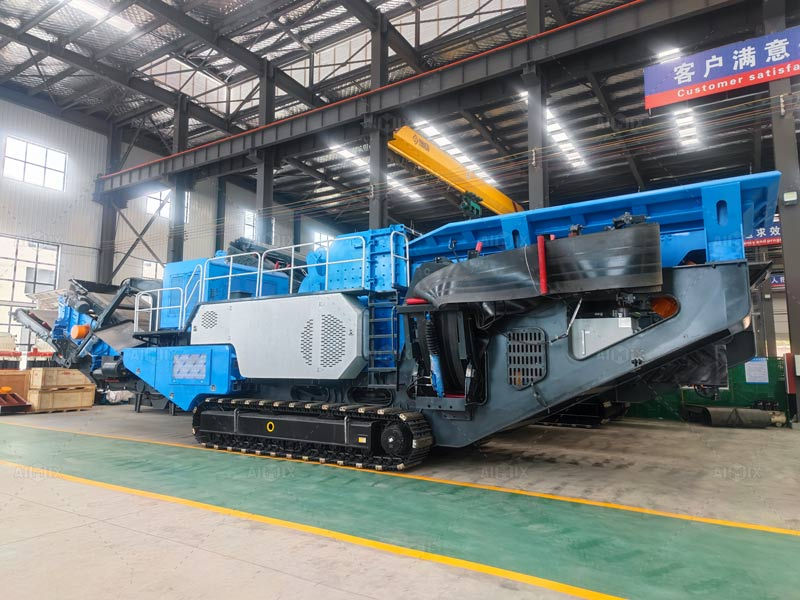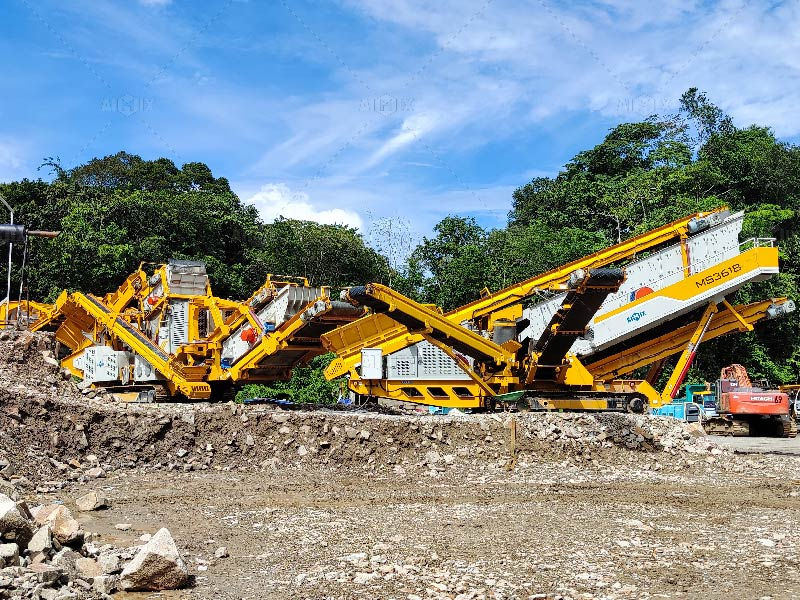The End Product Use Determines the Configuration and Performance of the Mobile Stone Crusher
- info515452
- 5月26日
- 讀畢需時 3 分鐘
In the mining and aggregates industry, the demand for customized, high-performance crushing solutions has never been higher. Whether the goal is producing road base, railway ballast, or high-grade concrete aggregates, the specific use of the final product will largely determine how a mobile stone crusher plant should be configured. From crusher type and screening options to mobility and power systems, understanding how end product requirements shape equipment design is crucial for operational success and cost efficiency.
This article explores how the intended application of crushed materials influences the setup and capabilities of modern mobile stone crushers(planta de trituracion movil), helping buyers and contractors make informed decisions when selecting equipment for their projects.
Understanding the Role of End Product Requirements
The primary consideration when selecting a stone crusher plant is not just how much material needs to be crushed, but what the material will be used for. This defines not only the final size and shape of the aggregates but also their cleanliness, grading consistency, and mechanical strength.
Different Uses, Different Specifications
For example, aggregates for asphalt production must be cubical and free of elongated particles, requiring fine control over shape and size. On the other hand, sub-base material for road construction can tolerate wider size distributions. A project requiring concrete-grade aggregates will likely need a configuration that includes both primary and secondary crushers, along with a sophisticated screening system.
Performance Versus Flexibility
Projects with varying demands over time—such as quarry operations serving multiple clients—will benefit from highly flexible aggregate crusher plant(chancadora de agregados) setups. In contrast, single-purpose crushing jobs may prioritize maximum throughput for a specific product size over versatility.
How Product Use Influences Crusher Configuration
Choosing the right crusher type is essential. Jaw crushers, cone crushers, impact crushers, and vertical shaft impactors each have unique advantages that make them more or less suitable for certain end products.
Primary Crushers for Rough Reduction
If the end goal is to produce general fill or road base, a jaw crusher as the primary unit in the mobile stone crusher plant may be sufficient. It can handle large input sizes and provides a good initial break.
Secondary and Tertiary Crushers for Precision
Projects requiring high-quality aggregates often employ secondary or tertiary cone or impact crushers to refine the output. These crushers ensure the required shape, gradation, and cleanliness for more demanding applications like concrete or asphalt mix production.
Screening and Closed-Loop Systems
End use also affects whether the system should operate in an open or closed loop. A closed-circuit configuration with integrated screening improves product control and reduces the need for re-crushing. This setup is ideal when consistent sizing is essential, such as in highway construction aggregates.
Mobility and Power Considerations
The terrain and location of the job site also interact with product use in determining the mobile crusher configuration.
Remote Projects Require Diesel Mobility
In off-grid areas or remote mining zones, self-powered mobile stone crusher plants with diesel engines are often preferred. These ensure uninterrupted operation where electrical supply is unavailable.
Urban Jobs Demand Compact and Emission-Friendly Designs
When operating in urban or environmentally sensitive areas, electric-powered crushers with compact footprints are better suited, especially if the end product is destined for infrastructure or commercial development.
Quick Setup for Short-Term Projects
If the final product is for a short-term government contract or private development, the plant should prioritize fast deployment and ease of relocation. Skid-mounted or trailer-mounted setups are commonly chosen for this reason.
Examples of Matching Plant Design with Product Goals
Let’s consider a few typical applications and how they shape plant configuration:
Concrete aggregate: Requires uniform particle size and cleanliness, often using jaw + cone crusher combinations with multi-deck screening.
Railway ballast: Needs angular, high-strength material—typically crushed using jaw and impact crushers.
Recycled aggregates: Involves removing impurities like rebar and plastics—necessitating magnetic separators and advanced screening modules.

Choosing the Right Stone Crusher Plant for Your Needs
When browsing equipment options, buyers often come across different classifications: fixed, semi-mobile, and fully mobile systems. For flexible operations, the mobile stone crusher plant(planta trituradora de piedra en venta) is ideal. However, performance depends heavily on how well the plant is tailored to its intended end product.
Here’s what to consider when matching a plant to product goals:
Input material hardness and moisture content
Required output size range and grading
Production volume targets
Regulatory standards for specific end uses (e.g., asphalt, concrete)
Conclusion
In today's competitive aggregates market, simply owning a crusher isn't enough. The real value lies in having a well-configured stone crusher plant that meets the specific needs of your end product. Whether it's producing precise concrete aggregates or robust railway ballast, the configuration of your aggregate crusher plant should be shaped by the job at hand—not the other way around.
Investing in the right mobile crushing solution, aligned with your end product goals, ensures better quality control, higher efficiency, and ultimately, more profitable operations.






留言